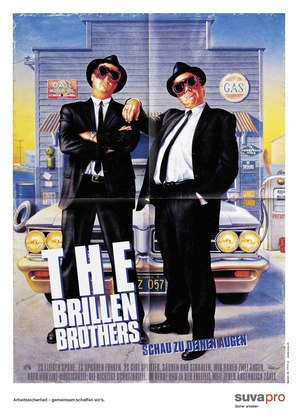
Unternavigation
Swiss Institute for Accident Insurance (Suva)
Founded in 1918, Suva is Switzerland’s oldest social insurance institution. It is distinguished by its tripartite organization encompassing employer organisations, trade unions and the Confederation.
Accident insurance is predominantly managed by the Swiss Institute for Accident Insurance (Suva), an independent institution under public law. The first forays for the establishment of a state health and accident insurance were discussed in the 1880s, in response to Bismarck’s social welfare laws. The implementation of this social insurance program was drawn out over several decades. An initial legislative proposal encompassing compulsory health insurance alongside accident insurance failed at the ballot box in 1900. The revised legislative proposal was limited to the nationalization of accident insurance and was adopted by referendum in 1912. After further delays due to the First World War, Suva commenced its work in 1918.
Suva has been organized in a tripartite system since it was founded. Its highest body, the administrative council, is composed of 16 seats for employee representatives, another 16 seats for employer representatives and eight seats for state authorities. Although this ‘parliament of members’ is appointed by the Federal Council, Suva otherwise operates autonomously. Its management board is subordinate to the directorate. The institution is divided into departments responsible, for instance, for medical affairs, mathematical and statistical tasks and accident prevention or claims settlement.
Private insurance companies hotly contested the establishment of Suva, as they feared they would lose a share of the accident insurance market. Suva was also not particularly popular among workers. Many employers considered its compulsory insurance and prevention policies to be an illegitimate interference in their corporate autonomy. Suva therefore pursued liberal, business-friendly policies during the early interwar period under the directorship of the former Suva critic Alfred Tzaut. However, during the economic crisis and as concepts of social partnership were gaining ground, social democrats and trade unions gained a greater degree of influence over the Institute. Suva represented a key institution of social partnership in the Swiss welfare state after the Second World War.
Accident insurance coverage was initially limited to industrial and commercial occupations that were deemed particularly dangerous. The application of the accident insurance has gradually expanded to additional occupations. The inclusion of non-work accidents marked an innovative milestone in 1918. Suva wished to avoid legal conflicts surrounding the distinction between non-work and commuting accidents deemed to be occupational accidents. Initially, the emphasis was clearly on occupational accidents. This gradually changed as workplaces became safer and society increasingly engaged in leisure activities. The number and costs of non-work accidents have been in excess of those of occupational accidents since the 1980s.
Suva has also been investing in schemes for preventing accidents in the workplace and in the rehabilitation of disabled victims of accidents since the interwar period. As the level of insurance premiums is calculated for each industry branch, investments in accident prevention have also benefited companies. They helped reduce medical costs and pension benefits, thereby bringing down premium costs at the same time. Suva established a range of rehabilitation facilities for similar reasons; such as the spa treatment center Zum Schiff in Baden in 1928, the rehabilitation clinic in Bellikon in 1974 and another similar clinic in Sion in 1999.
A new Accident Insurance Law (UVG) came into force in 1984, replacing the previous law of 1912. It extended compulsory accident insurance to all employees above a certain level of employment, including in the service sector. There was a concurrent liberalization of the monopoly of the SUVA as insurance provider. Commercial insurance companies were also newly admitted as compulsory accident insurance providers, but only in industries with a low accident risk. The SUVA thus lost its previous monopoly over providing compulsory insurance, first in the service sector but increasingly in the industrial sector as well.
Work on reforming the UVG began again in 2006. Differing interests clashed, and the revision of the law turned into a lengthy process. The private insurers, as well as the employer associations, called for further liberalization of the accident insurance sector, along with abolishing the remaining, if partial, monopoly SUVA still had. The SUVA, in turn, demanded it stand on an equal footing with its competitors, and also wanted to be able to offer supplementary insurance. This went beyond the strictures of the UVG. The initial draft law from the Federal Council was rejected by Parliament in 2011. The Federal Council thereupon asked employers' associations and trade unions to work out proposals for a new bill. By 2013, they had found a compromise that ultimately proved successful. It was supported by the insurers and it left out the controversial issues surrounding privatizing and dismantling the SUVA. The revision of the UVG, which came into force in 2017, does not call for structural changes but does contain various administrative adjustments. In its response to the successful revision, the Federal Council particularly emphasized the closing of coverage gaps as a significant innovation.
Literatur / Bibliographie / Bibliografia / References: Lengwiler, Martin (2006), Risikopolitik im Sozialstaat. Die schweizerische Unfallversicherung 1870-1970, Köln; 75 Jahre Suva (1993), Sonderausgabe Suva-Bulletin, Luzern. Website 100 Jahre Suva: https://www.suva.ch/de-ch/die-suva/100-jahre-suva
(12/2017)




